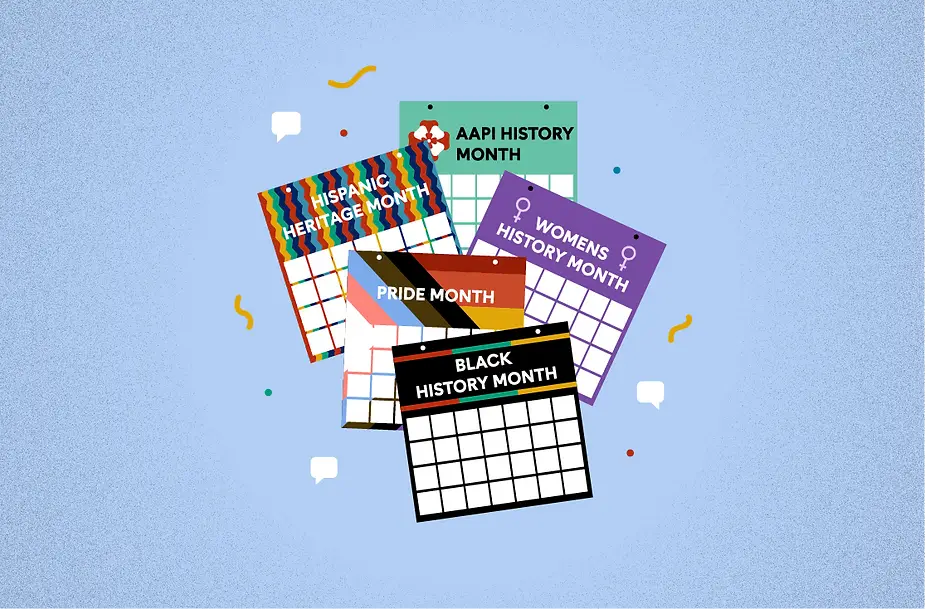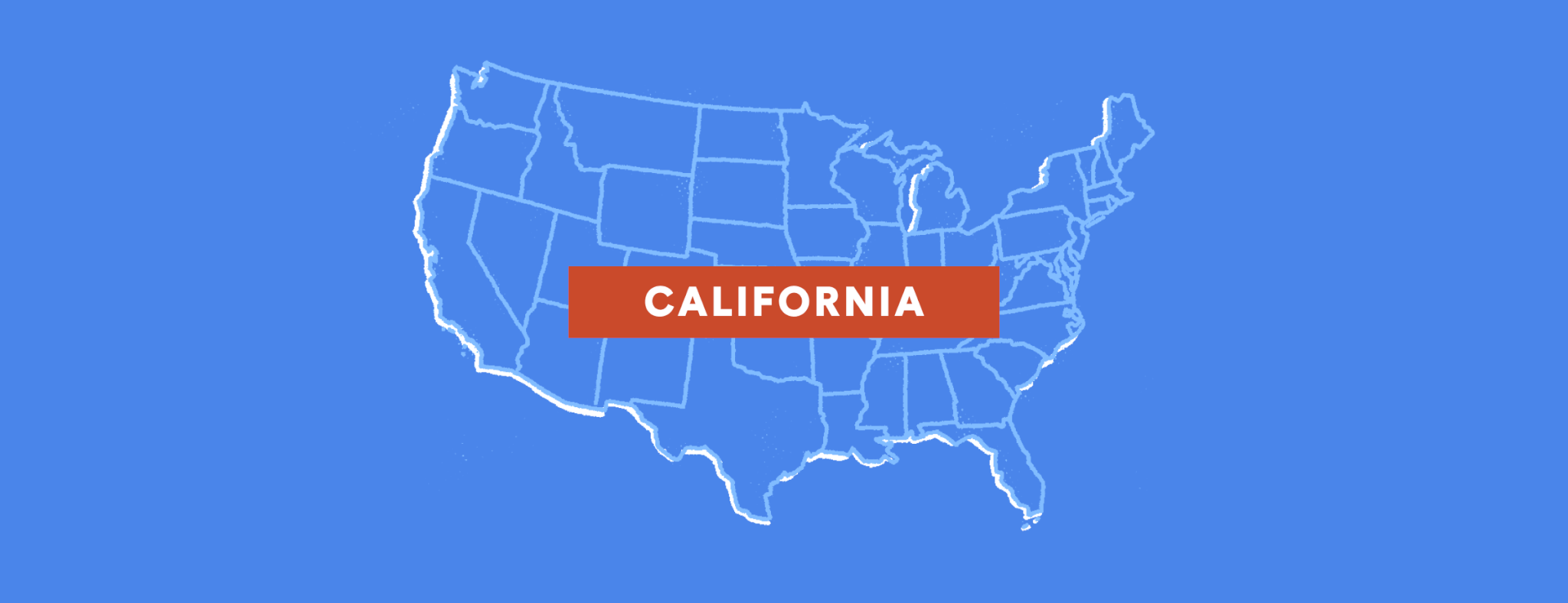Here are a few tips on how to make Heritage Months special at your workplace.
We’ve been thinking critically about what it means to celebrate Heritage Months as a company. While there's not a universally right answer that applies to every size business in every community, we have a few tips that'll help you make the most from each heritage celebration month.
What Are Heritage Months?
You’ve probably heard of Black History Month, Pride Month, Hispanic Heritage Month, AAPI (Asian American and Pacific Islander) History month, and so much more, but what exactly is a “Heritage Month”?
In the United States, Heritage Months are specific months throughout the year that have been designated as times of celebration, acknowledgment, and education relating to different ethnic and marginalized groups. Utilizing an entire month allows for all kinds of activities to take place, giving everyone the opportunity to participate in the history and culture of a certain group of people (as well as plenty of opportunities for advocacy and positive change).
If you’ve lived in the US for any extended period of time, you’ve probably experienced first-hand the visibility of a certain Heritage Month in all kinds of places, from social media, to your local coffee shop, and even (hopefully) your workplace.
Celebrating Heritage Months at Ethena
As a growing company (with new team members joining every week), we’ve admittedly had a more casual, community-focused approach to Heritage Months. Back in 2020, when Ethena was a company of about a dozen or so remote employees, we took turns highlighting our favorite people (authors, activists, scientists, chefs, you name it!) who shared their heritage with whatever month we were in. We focused our company volunteer efforts on Heritage Months where we could (remote as we were), one of which being a group Zoom call as everyone transcribed Smithsonian historical documents from Black Americans. (Side note: reading handwriting from the 1800s is harder than it sounds!)
Looking forward to 2022 and beyond, there are a few things we recommend you keep in mind when it comes to Heritage Months for your company. And while we should clarify that this is not a one-size-fits-all issue and our solutions may not work for your team — we hope you take our intentions to heart (or at least, to your next strategy sesh).
How to Celebrate Heritage Months At Work
1. Team-Wide Visibility, Team-Wide Participation
However you plan on celebrating all Heritage Months, it’s important to make the extra time in company-wide announcements and meetings to share your plans for how you want to celebrate each month as a team.
And we do mean as a team.
For our team right now, that means that managers, execs, and even new hires are likely to take a few minutes during our all-hands meeting at the start of the week to talk about the current Heritage Month and what we have planned over the next few days.
2. Just Do Something
As much as we love sharing some of our favorite activists with our team during Heritage Months, at the end of the day, it doesn’t feel like we’ve really participated properly. And by “participating properly,” we mean making the effort to actually contribute to the community we’re celebrating.
Finding ways to get together as a community — like volunteering, team-building activities, book clubs, and more — is essential to making a meaningful impact every month.
3. Volunteer-Only Is Not Sustainable
Over the past few years, we’ve seen a lot of evolution in our internal programs as we’ve grown. Right now, we have a lot of energetic volunteers willing to step up to celebrate Heritage Month activities, but similar to employee resource groups (ERGs), we’re well aware that relying on volunteer participation isn’t going to serve us well in the long run.
Plus, if we’re thinking about this ethically, no company should put the onus on employee volunteers to make Heritage Months a success; your company should play a significant role in making these things happen, as well. Finding an equitable way to get everyone involved in Heritage Month celebrations is key to long-term sustainability.
When Heritage Months are a priority for your organization, it’s never too difficult to find the right time for everyone to get involved.
4. Find the Heritage Months that Make Sense for Your People
A cursory Google search will point out that there are a handful of Heritage Months that are consistently and widely celebrated throughout the US (we listed a few above, but others like Hispanic Heritage Month, National Disability Employment Awareness Month, and Native American Heritage Month are noted in a lot of places).
But there are definitely more than 12 Heritage Months out there, which means it’s critical to do your research–both outside and inside your organization — to know which Heritage Months will be most meaningful for the inclusive and equitable workplace you want to see.
That means paying close attention to blind spots when you’re planning things out, and we highly recommend sharing your thought process and partnering with your employees on the celebrations that matter.
We’re still exploring the best way to do this for our own team, but a good place to start is acknowledging that celebrating one thing doesn’t necessarily mean you’re canceling out the other. Why not dig in and celebrate two Heritage Months? After all, our identities are intersectional and multi-faceted, so why can’t our celebrations reflect that?
5. Brush Up On Your DEI Training
Inclusivity of your employees' heritages shouldn't end when the month is over. An impactful DEI training that you can send annually, twice-a-year, or whenever you darn feel like it, can help. Making lasting change and affecting overall workplace behaviors is what Ethena is all about. It's what we were founded on.
Not all DEI trainings are created equal. Most are mere "check-the-box trainings," where they fulfill a compliance requirement, but not your company's goals towards a more inclusive workplace. Luckily, our DEI training is informed by legal counsel, has engaging content that keeps your attention, and has workplace scenarios that are reflective of today's times. If you're curious on what they're like, request a sample DEI training today to see it in action for yourself.
List of Different Heritage Months in America
While there's no universal list that has all Heritage Months to celebrate in America, there are certain ones that tend to resonate with the audience you'll likely have at work. You can't celebrate every heritage out there (wouldn't that be nice), so it's important to pick and choose the ones that'll help your employees feels recognized, represented, and appreciated.
Here are a few popular Heritage Months on the calendar in America to keep in mind:
- February: Black History Month
- March: Women's History Month
- April: Sexual Assault Prevention and Awareness Month
- May: Asian American and Pacific Islander (AAPI) Heritage Month
- June: Pride Month
- July: Disability Pride Month
- September: Latinx Heritage Month
- October: National Disability Employment Awareness Month
- November: Native American Heritage Month
Make Heritage Months Special
At the end of the day (or should we say “month”?), there’s no scorecard when it comes to a Heritage Month celebrated well.
However, as long as you’re thinking critically and carefully about equity and inclusivity, willing to go the extra mile to support those with rising identities, opening the conversation to learn more about your team’s needs as you go, and game for having some fun along the way, you’re moving in the right direction.
Check out our blog Why Your Company Needs DEI Training to learn more. And if you'd like to see if modern compliance training is right for you or your organization, let's talk!









